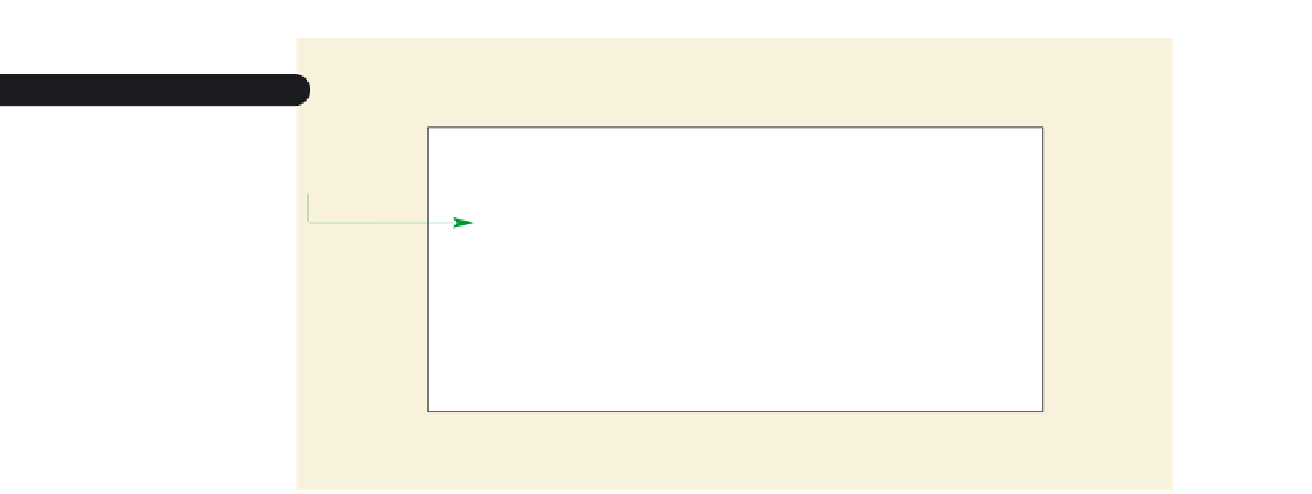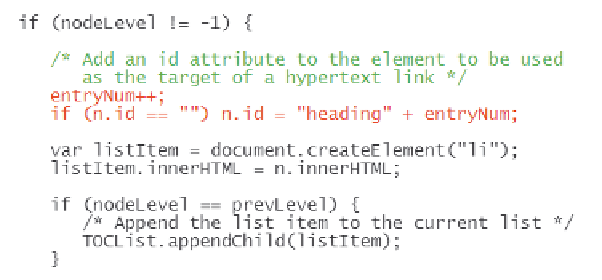HTML and CSS Reference
In-Depth Information
Figure 14-37
writing the heading id value
increases the entryNum
variable every time a
new headin
g
is found
writes an id to the
heading element only
if no id is present
◗
2.
Save your changes to the file.
Looping Through the
attributes
Collection
You can examine each HTML attribute associated with an element using the following
attributes
collection:
node
.attributes
Each attribute's name is referenced using the
nodeName
property, and each attribute's
value is referenced using the
nodeValue
property. For example, the following
for
loop
writes a text string containing each attribute's name and value, enclosed in quotes, for
the document's first
section
element:
var s1 = document.getElementsByTagName(“section”)[0];
var attText = “”;
for (var i = 0; i < s1.attributes.length; i++) {
attText += s1.attributes[i].nodeName;
attText += “=”;
attText += “'” + s1.attributes[i].nodeValue + “' “;
}
The
attributes
collection is an example of a
named node map
, which is an unordered
list of nodes that can be referenced by their names—in this case, attribute names. You
also can reference the
attributes
collection using an index number, as the previous
code demonstrates. However, be aware that there is no standard ordering of attributes
by index number.
Inserting Links
Next, you need to revise the structure of the TOC node tree to change each list item to a
hypertext link pointing to the corresponding heading in the source document. The value
of the
href
attribute for each list item will be
#
id
where
id
is the id value assigned to the corresponding heading. You'll also add the id
value to each list item in the TOC using the format
TOC
id


















